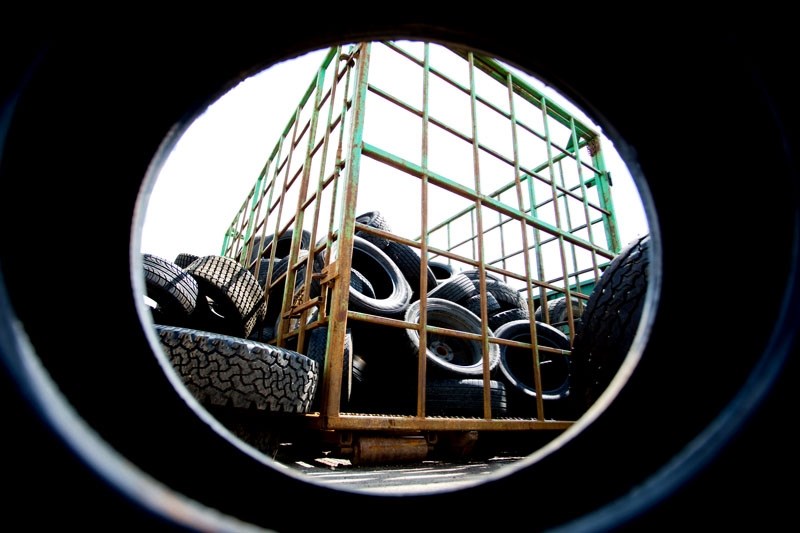Note: 6 photos in folder called Recyle photo page
St. Albert has one of the highest rates of waste diversion in the country, diverting 65 per cent of its waste to recycling or compost rather than the landfill.
"Our program is seen as what other people want to strive for," says Christian Benson, the city's manager of environment and former waste programs coordinator. "But there is always room for improvement."
What has helped St. Albert achieve such sought after landfill diversion rates has been a combination of high citizen participation, as well as progressive recycling programs, including curb-side organics and blue-bag collection.
Since its implementation in June 2011, organics collection has increased nearly 50 per cent, totalling more than 9,000 metric tonnes in 2015.
"Organics are the heaviest material in the waste stream. It's a huge component of any diversion program," explains Benson.
In conjunction with the Mike Mitchell Recycling Depot, the blue-bag program has diverted nearly 5,000 tonnes of waste from the landfill.
Items such as paper products, metal cans, glass jars, tires and electronics are accepted at the recycling depot located in the Campbell Business Park.
E-waste and cardboard in particular are highly valuable recyclables, explains Benson. No. 1 polyethylene terephthalate (PET) plastic containers and aluminum are also highly sought after.
"A lot of the money that we're able to recover from that facility goes back into the operation of it."
The recycling depot is open Tuesday to Saturday with limited hours of operation because city staff must be on site, says Benson. Due to the collection of hazardous waste and e-waste, staff must be present at the facility in case of any contamination or identity-theft issues, respectively.
REDUCE, Reuse and Recycle
Emerging waste diversion technologies such as anaerobic respiration and waste-to-biofuel conversion (currently used by the City of Edmonton), will no doubt shape how waste is dealt with over the next five to 10 years, explains Benson, but a greater focus will be on overall waste reduction.
As stated in the Environmental Master Plan updated in 2014, the city's new waste per capita target is 105 kilograms per person per year. Waste per capita was 121.5 kilograms per person in both 2014 and 2015.
Benson believes the goal is achievable with the city's current infrastructure, but some things will need to change.
"We're great at these diversion programs, but ultimately we have a problem with generation. We are generating too much material," he says. "If you look at the leaders in North America, they are focused on reduction as opposed to just diversion."
San Francisco, one of North America's greenest cities, recently introduced an extensive ban on the usage of polystyrene foam in everything from coffee cups to packing peanuts, which will take effect next year. This follows a 2007 ban on polystyrene food take-out containers. Municipalities across Canada have also banned certain difficult-to-recycle plastics in an effort to curb waste.
Consumers need to reflect on their purchasing habits and just how much waste they are generating through extra packaging materials, says Benson. Once consumers make the conscious decision to reduce waste volume, industry will follow.
Keep it clean
Food residue and water degrade the quality of recyclables, says Benson. "It is worth more as a recyclable material if it is clean."
Remember to:
• Clean containers, make sure they are free of food materials
• Take labels off containers
• Make sure paper products are dry




